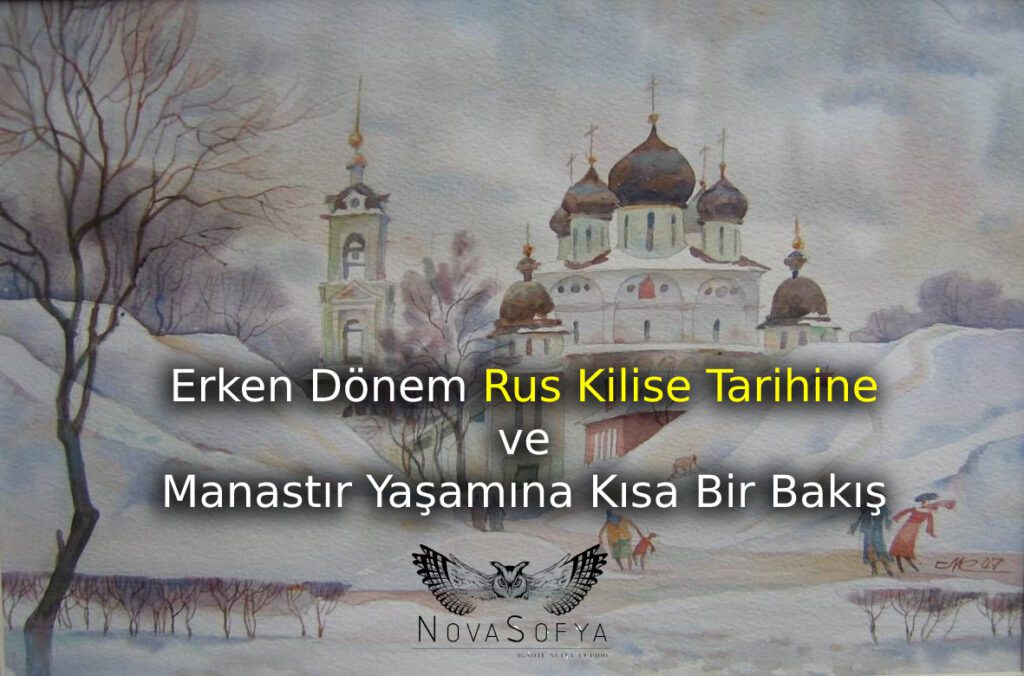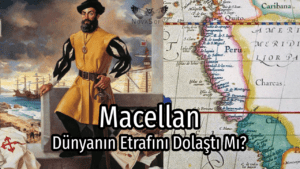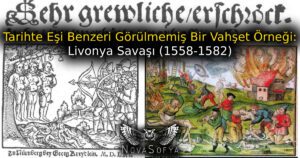The History of Early Russian Church and Monastic Life

As it is known, during the reign of Vladimir I, in 988, Christianity became an official religion in Russia. Under the intense influence of Byzantine Orthodoxy, Vladimir forced the Russian people to Christianize en masse. He ordered to built new churches in places where pagan idols used to exist. Under the influence of metropolitans, bishops, priests and monks sent by Byzantium, churches and monasteries began to designed by architects according to the Byzantine model. The newly established Russian Orthodox Church was directly attached to the Patriarchate of Constantinople. During the period, the children of the best families were taken and trained to learn the newly adopted Christian religion. So, the Russians, who had just accepted Christianity, aimed to create a native clergy. Following Kiev, other cities of the Rus’s office also began to adopt Christianity. Thus, from the last quarter of the X century, the Russians began to intensively Christianize.
Within the framework of the religious influence of the Byzantine Empire, the metropolitans appointed by the Patriarchate of Constantinople. During the period of the domination of the Golden Horde over Russia, the Russian spiritual circles took advantage of the tolerance of the Turko-Tatars towards various religions and obtained various privileges. At the same time, the monks who came to Russia from the Byzantine Empire and Bulgaria spread the influence of Eastern Christian culture. On this occasion, the first texts of Russian law were also under the influence of Byzantine and Bulgarian Christianity. The fact that there are many religious provisions in the Church Laws of Vladimir and Yaroslav and in the Kormchaya Knigas where they were recorded reveals this effect. In fact, Povest Vremennıh Let (The Story of the Past Years), the first chronicle of the Russians, wrote that pagan and savage traditions in social life were “cleansed” with the Christian religion.
If we talk about the internal structure of Russian Orthodoxy, it will be interesting to mention at this point an issue that is one of the traditions of Orthodoxy and is very important by Russians. This is the monastic tradition. According to Eastern Orthodox tradition, there is only one way to save one’s soul; This means leading a monastic life. According to this tradition, monks should be purged of worldly life and anxieties, drawn into monastic life and lead a spiritual life. However, in the XIV and XV centuries, the situation of monastery in Russia made life attractive. As a matter of fact, the Mongol domination in the Eastern European area and the struggles of the Russian princes among themselves pushed people to take refuge in safe places. At the same time, not only wars, but also the Black Plague destroyed almost half of its population. Russian chronicles reported, “there was tremendous suffering in Russian cities due to the epidemic, and there were only the sounds of crying and groaning in the markets and streets.” In this negative picture, the Russian clergy and people believed that the world will end in 1492, the last year of the Julian calendar. It was certain that the masses of the people who shared this view preferred a religious life. Because of all these conditions, people flocked to the monasteries. In fact, according to the information given by the sources, the mothers left their newborn babies at the gates of the monasteries.
If we want to speak about monasteries, it is impossible to speak of a uniform monastic life. There are two types of monastic styles in XV and XVI century Russia. The first of these are cenobitic, that is, monasteries reflecting the common life of the monks. Here, the monks lived together and met their needs in a communal manner. A new monastic order, which later became widespread through Mount Athos, became widespread. In this form of monastery, known as the “skete” or “skit”, two or three monks lived together and met their needs without any outside help. However, this skit-style monastic life was a precursor to the common life. other people influenced by the ascetic life of two or three monks would come and join the monastery, thus forming a large mass of monasteries. The monks, who adopted the Skete life, acted jointly in certain rituals and construction works of religious buildings, then retired to their own permission.

The diversity of the monastic way of life became a subject of Russian literature of the XV and XVI centuries. The Cenobitic-style monasteries also accommodated land ownership, as they were based on communal living. In contrast, the monks, who preferred the skete style and were also writers, opposed cenobitic monasticism. Nil Sorskiy and his student Vassian Patrikyev produced literary works, in which they presented their proposals against the joint and land-owning monasteries led by Yosif Volotsky. All this contrast constituted the internal issue of the Russian Orthodox Church in the XV and XVI centuries, and this issue brought about the development of literature.
When we look at the foreign policy of the church; The Russian Church, which was subordinate to the Patriarchate of Constantinople in theological and hierarchical matters, began to distance itself from Byzantine influence with the outcome of the Council of Florence in 1439. From this period on, the Russian Church began to seek refuge under the protection of the Russian princes and their successors, the tsars. This situation increased the political-religious tension in Russia. As a matter of fact, the question of land ownership caused a conflict between the rulers of the Russian Church and the Moscow Rus’. Because a large number of monasteries established in various parts of the country increased their own property and prospered. For example, during the great famine, the Kirillo-Belozerskiy Monastery could feed 600 people a day. But the downsides of this growth were to the detriment of the peasants. The peasants living in the “black lands” became an object of desire in these prosperity of the monasteries. Thus, the XV and XVI centuries became the cradle of the church-state struggle in Russian domestic politics. So much so that this struggle even became the main trigger in the development of the literature of the period. Some authors advocated the unity of church and state and the right of church to land ownership, while others strongly criticized the prosperity of churches and monasteries. The works given in the field of literature on the relationship between church and state were effective in the transformation of the Russian administrative organization into the identity of caeseopapism. The most obvious example of this was at the coronation of Ivan IV in 1547. At this ceremony, it was emphasized that the Russian tsar was also the patron of Orthodoxy.

Under these circumstances, the Russian Orthodox Church, which became independent after the Council of Florence in 1439, was elevated to the title of Patriarchate in 1589. After the patriarchates of Constantinople, Alexandria, Antioch and Jerusalem, it received the status of the fifth patriarchate. This situation was obtained as a result of financial aid to the Patriarchate of Istanbul. When the position of the Russian Church was confirmed by the Eastern patriarchates, Russia was accepted as the heir of the Byzantine Empire and the protector of the Orthodox world. Even Patriarch Jeremias II of Constantinople (1572-1595) blessed the patriarch of Moscow himself, and allegedly spoke to the Tsar in the words of Filofei: “Your great Russian Tsardom is the Third Rome, as ancient Rome has fallen due to Apolliniarian heresy and the Second Rome, which is Constantinople, has been taken over by the Godless Turks.”



